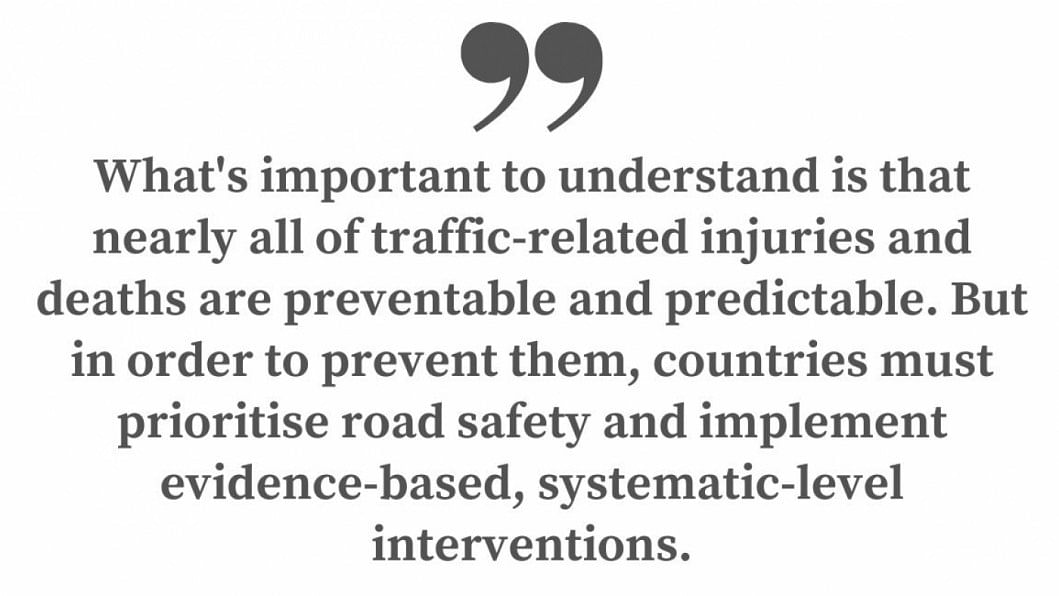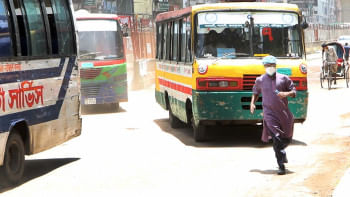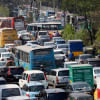Beyond awareness: A new decade of action on road safety

In the month following the United Nations' High-Level Meeting of the General Assembly on Global Road Safety this summer, Bangladesh experienced one of its deadliest months on the road. Nearly 400 people were killed and almost twice that many injured in more than 300 road crashes during the Eid-ul-Azha holidays. That's the highest number of road deaths during the holiday festival since the country started collecting data in 2016.
Road traffic injuries (RTIs) are now the eighth leading cause of death worldwide, amounting to 1.35 million deaths and 50 million injuries each year. In Bangladesh, RTIs are among the leading causes of death and disability, killing approximately 25,000 people in 2016 and leaving 2.4 percent of road crash victims with a permanent disability, according to the Global Status Report on Road Safety.
In addition to their impact on public health and safety, RTIs are a major economic burden, costing the country approximately Tk 4,500 crore (USD 76 million) and accounting for approximately 1.5 percent of Bangladesh's GDP annually.
At its high-level meeting, the UN declared a second Decade of Action for Road Safety 2021-2030 to reach its Sustainable Development Goal (SDG) of a 50 percent reduction in RTIs and deaths worldwide. Bangladesh set similarly ambitious goals of reducing road traffic deaths and injuries by 20-25 percent by 2024 and 50 percent by 2030.
Yet, RTIs continue to climb in Bangladesh and around the world, though not for a lack of awareness.
The UN's first Decade of Action from 2011-2020 helped raise global awareness around the issue of road safety. In Bangladesh, a series of public protests in 2018 following the deaths of two students killed by a bus led to some modest improvements in how the country sought to address the epidemic of traffic injuries and deaths.
Yet, in Bangladesh and beyond, the decade was unable to decrease the number of RTIs, which is why we now find ourselves renewing efforts to solve this problem. Declaring action will not be enough this time; taking action is what we need now.
What's important to understand about this crisis is that nearly all of traffic-related injuries and deaths are preventable and predictable. But in order to prevent them, countries must prioritise road safety and implement evidence-based, systematic-level interventions that can save hundreds of thousands of lives.
The good news is we already know a great deal about what works.

In a series of papers published in The Lancet, one of us, together with colleagues, examined four risk factors – lack of helmet use, lack of seatbelt use, speeding, and drunk driving – that dramatically increase road fatalities. We found that if we implemented road safety interventions around these four key risks, up to 540,000 lives could be saved globally.
We also showed that improving emergency response and trauma care in low- and middle-income countries could save approximately 200,000 lives each year. In Bangladesh, RTIs are a major cause of admissions at primary- and secondary-level hospitals, accounting for about one in five injury-related admissions.
Though we have a growing body of evidence, fatalities continue to rise in lower-income countries while progress on road safety has slowed in higher-income countries. Why? Many countries and cultures remain in thrall to the automobile. As public health practitioners, we study how industry activities harm public health – what we call commercial determinants of health.
A vehicle-centric environment affects everything from our infrastructure choices and vehicle design to how we perceive so-called road traffic "accidents." Even the language we use to describe crashes is problematic. Calling something an "accident" connotes a blameless word that fails to account for predictable risks and generations of vehicle-centric policy decisions and design.
Like the Vision Zero campaign, which seeks to eliminate all traffic fatalities and severe injuries, we need a safety-first mentality that prioritises protecting people. Pedestrians, cyclists, and motorcyclists make up more than half of crash victims globally. In Bangladesh, motorcycles made up nearly half of all crashes this year so far, making it an especially dangerous mode of transportation.
Installing better street design and lighting, signage, pedestrian measures such as footpaths and crosswalks, while truly enforcing lower speed limits and helmet laws, would significantly improve road safety. In fact, the World Bank approved significant financing for Bangladesh's road safety project to accomplish comprehensive measures like these in order to help meet its SDGs on road safety by 2030.
These are steps in the right direction, but it is also necessary to establish a lead agency that can work to address the burden of RTIs. Further, continuous monitoring and evaluation of road safety measures are crucial to maintaining a safety-first approach. In this instance, what we don't know truly can hurt us.
It is long past time to rethink how we're trying to solve this problem and to learn from past failures. We believe that we can make the next 10 years safer. It will take meaningful political and financial commitments from all countries – Bangladesh included – to make that happen. To continue down the road we're currently on will only lead to more unnecessary loss of life and heartbreak.
Mohammad Khalaf is a doctoral candidate in the global health programme at Milken Institute School of Public Health, George Washington University.
Fazlur Rahman is executive director at the Centre for Injury Prevention and Research, Bangladesh (CIPRB).
Adnan A Hyder is director of the Center on Commercial Determinants of Health and professor of global health at Milken Institute School of Public Health, George Washington University.

 For all latest news, follow The Daily Star's Google News channel.
For all latest news, follow The Daily Star's Google News channel. 











Comments